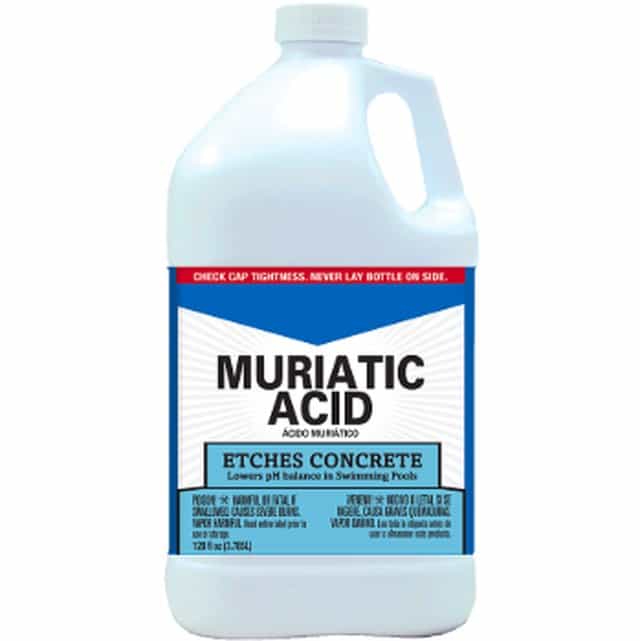Welcome to the world of versatile hand tools, where precision meets adaptability—the Crescent wrench takes center stage. As a timeless icon in adjustable wrenches, the Crescent wrench has played a pivotal role in countless mechanical endeavors. Join us as we delve into the history, functionality, and enduring appeal of this indispensable tool that has tightened and loosened its way into DIY enthusiasts and professionals’ hearts.
Table of contents
What is a Crescent Wrench Used For
The Crescent wrench, an adjustable wrench, is a versatile hand tool designed primarily for tightening or loosening nuts and bolts of various sizes. Its defining feature is the adjustable jaw, allowing users to accommodate different fastener sizes easily. The wrench typically has a screw mechanism that adjusts the width of the jaws, enabling it to grip nuts and bolts of varying diameters.
One of the critical applications of the Crescent wrench is in plumbing tasks. Plumbers often encounter a range of nut and bolt sizes while working on pipes and fittings. The adjustable nature of the Crescent wrench makes it an invaluable tool in such scenarios, allowing plumbers to quickly adapt to different fastener sizes without the need for multiple twists.
Crescent wrenches are also commonly employed in automotive maintenance and repair. From tightening lug nuts to adjusting various components, the adjustable jaw provides flexibility, making it a go-to tool for mechanics. This adaptability is particularly useful when a precise measurement of the fastener size may not be readily available.
The Crescent wrench’s utility extends beyond traditional repair and maintenance domains. It is frequently used in household tasks, such as assembling furniture, fixing appliances, or addressing general DIY projects. The simplicity of its design, coupled with the ability to handle a variety of fastener sizes, makes the Crescent wrench a convenient tool for homeowners and hobbyists.
Additionally, the portability and ease of use make Crescent wrenches suitable for on-the-go applications. Many professionals and DIY enthusiasts include a Crescent wrench in their toolkits due to its compact design and ability to handle various tasks.
It’s important to note that while Crescent wrenches are versatile, they may not provide the same level of precision as a wrench specifically designed for a particular size. Therefore, a twist with a fixed size may be more appropriate. When precision is crucial
How to Differentiate Crescent Wrench And Other Types of Wrenches
The Crescent wrench, renowned for its adaptability, stands apart from other wrench types primarily due to its adjustable jaw mechanism. Unlike traditional fixed-size wrenches, the Crescent wrench features a movable jaw that can be easily adjusted to fit a range of nut and bolt sizes. This fundamental design element grants the Crescent wrench versatility that is crucial in various applications.
The adjustable jaw is typically controlled by a threaded screw mechanism integrated into the wrench. This mechanism allows users to widen or narrow the gap between the jaws, accommodating fasteners of different diameters. This adaptability is a game-changer in situations where the precise size of the nut or bolt may be unknown or varies across a project.
Compared to combination wrenches or socket wrench sets, the Crescent wrench’s design reduces the need for multiple tools, offering a convenient all-in-one solution. This feature is advantageous when efficiency and portability are paramount, such as emergency repairs or on-the-go tasks.
The ergonomic design of the Crescent wrench also contributes to its usability. The handle is typically long enough to provide sufficient leverage while remaining comfortable to grip. This design consideration enhances the wrench’s effectiveness in tasks that require substantial torque, such as loosening tightly secured nuts.
Moreover, the adjustable jaw of the Crescent wrench makes it well-suited for tasks in confined spaces where using a giant wrench might be impractical. The ability to adapt to different sizes without swapping tools streamlines the workflow, saving time and effort in various professional and DIY applications.
While the Crescent wrench’s versatility is undeniable, it’s essential to recognize its limitations. The adjustable jaw may not provide the same precision as a fixed-size wrench, and there could be a risk of slippage if not correctly adjusted. Therefore, understanding the appropriate use cases and proper adjustment techniques is crucial for maximizing the effectiveness of the Crescent wrench.
Tips on How to Properly Use a Crescent Wrench
Effectively using a Crescent wrench involves a combination of proper technique and understanding the unique features of this adjustable tool. To ensure efficient tightening or loosening of nuts and bolts, consider the following tips:
● Proper Adjustment: Before applying any force, adjust the jaws of the Crescent wrench to fit the size of the nut or bolt securely. Ensure a snug fit to prevent slippage during use, which can lead to rounded edges and potential damage.
● Orientation of the Wrench: For optimal leverage, position the wrench so that you are pulling rather than pushing. Stretching allows you to use your body weight for added force, especially when dealing with tight fasteners.
● Direction of Force: When tightening a fastener, turn the Crescent wrench clockwise, and for loosening, turn it counterclockwise. Aligning the direction of force with the thread direction ensures a more efficient operation.
● Apply Even Pressure: Distribute the force evenly across the wrench handle. Avoid exerting excessive force, as it may lead to over-tightening or damage. Gradually increase the pressure until the desired torque is achieved.
● Consider the Material: Be mindful of the material of the nut or bolt you are working on. Applying excessive force on softer materials may result in deformation. Adjust your technique accordingly based on the material to avoid unintended damage.
● Regular Inspections: Periodically check the wrench for any signs of wear, such as damaged jaws or a loose adjustment mechanism. Maintaining the tool in good condition ensures its effectiveness and longevity.
● Use Two Hands for Better Control: When dealing with stubborn or tightly secured fasteners, use both hands on the wrench handle. This provides better control and stability, reducing the risk of accidents.
● Avoid Using Cheater Bars: While using an extension for more leverage might be tempting, cheater bars or pipes on the wrench handle can compromise its integrity. Stick to the tool’s designed length to prevent damage.
By adhering to these tips, users can harness the full potential of a Crescent wrench, making it a reliable and effective tool for a wide range of applications. Whether you’re a professional tradesperson or a DIY enthusiast, mastering the proper techniques enhances safety and efficiency in your work.
Frequently Asked Questions
Crescent wrench, an adjustable wrench, is a versatile hand tool designed for tightening or loosening nuts and bolts of various sizes.
The Crescent wrench features an adjustable jaw that can be widened or narrowed using a screw mechanism, allowing it to adapt to different fastener sizes.
The adjustable jaw of a Crescent wrench enables it to handle a variety of nut and bolt sizes, eliminating the need for multiple twists and increasing overall versatility.
Yes, the compact design of Crescent wrenches and their adjustable feature make them suitable for tasks in confined or hard-to-reach spaces.
While versatile, Crescent wrenches may lack the precision of fixed-size twists, and improper adjustment may lead to slippage. Understanding their strengths and limitations is crucial for practical use.
Conclusion
The Crescent wrench is a steadfast companion in the toolkit, embodying adaptability and efficiency. From plumbing repairs to automotive maintenance, its adjustable jaw has proven indispensable, offering a versatile solution for various tasks. As we tighten the last bolt, let’s appreciate the enduring legacy of the Crescent wrench—a timeless icon in the world of hand tools.
References
● howstuffworks.com: What is a Crescent Wrench used for?
● britannica.com: Crescent Wrench





